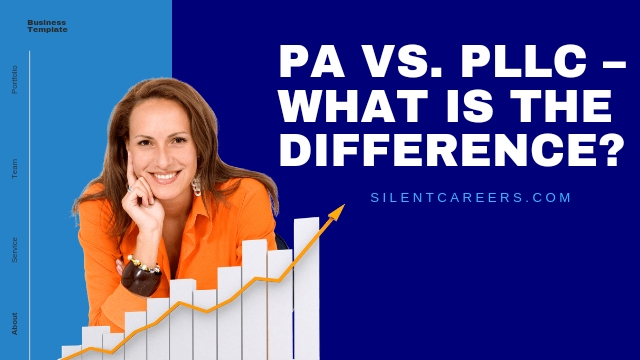

What is a Binder in Real Estate?
A binder in real estate, also known as an earnest money agreement or a purchase offer, is a preliminary agreement that indicates a buyer’s serious interest in purchasing a property. Here are the key aspects of a binder in real estate:
Key Components of a Binder:
- Earnest Money Deposit:
- The buyer typically provides a deposit, known as earnest money, to show their commitment to purchasing the property. This deposit is held in escrow until the sale is finalized or the agreement is terminated.
- Basic Terms:
- The binder outlines the basic terms of the proposed transaction, including the purchase price, property description, and any contingencies or conditions that must be met.
- Contingencies:
- Common contingencies may include financing, inspections, and the sale of the buyer’s existing property. These conditions must be satisfied for the sale to proceed.
- Timeframe:
- The binder specifies a timeframe within which the formal contract of sale must be signed and the deal must be closed.
- Signatures:
- Both the buyer and seller (or their agents) sign the binder to acknowledge their agreement to the preliminary terms.
Purpose and Function:
- Shows Serious Intent: The binder demonstrates that the buyer is serious about purchasing the property and willing to provide a financial commitment.
- Secures the Property: It temporarily takes the property off the market, preventing other buyers from making offers while the formal contract is being prepared.
- Framework for Formal Contract: The binder serves as a foundation for drafting the final purchase and sale agreement, which will include more detailed terms and conditions.
Binding Nature:
- Preliminary Agreement: While a binder is an important step in the real estate transaction process, it is generally considered a preliminary agreement rather than a legally binding contract. The terms laid out in the binder will be incorporated into the final contract, which both parties must sign to make the sale legally binding.
- Legal Implications: The legal enforceability of a binder can vary depending on jurisdiction and specific circumstances. In some cases, the binder may be considered binding if it includes all essential terms of a contract.
What is a Binders? Simple Definition & Overview
A binder in real estate is a preliminary agreement between a buyer and a seller that outlines the basic terms and conditions of a property sale. It includes an earnest money deposit from the buyer to show their serious intent to purchase the property.
Overview:
- Purpose: Demonstrates the buyer’s commitment and temporarily secures the property while a formal contract is being prepared.
- Components:
- Earnest Money Deposit: A sum of money paid by the buyer to show good faith.
- Basic Terms: Includes purchase price, property description, and contingencies (e.g., inspections, financing).
- Signatures: Signed by both parties to acknowledge agreement to the preliminary terms.
- Function: Serves as a framework for drafting the final purchase and sale agreement, which will be legally binding once signed by both parties.
In essence, a binder is an initial step in the real estate transaction process that helps outline the key terms and demonstrates the buyer’s serious intent to proceed with the purchase.
Read more:
- What is a Township in Real Estate? Definition & Benefits
- What is Ratification Meaning in Real Estate?
- What’s a Straight Note in Real Estate? (Definition & Types)
Types of BindersBinder Contracts: Sale Price, Deposit Amount, Additional Costs & Contingencies Etc.
Binders in real estate can vary based on their purpose and specific terms. Here are some common types and their key components:
1. Purchase Offer Binder:
- Purpose: To make an initial offer to buy a property.
- Key Components:
- Sale Price: The price the buyer is willing to pay for the property.
- Deposit Amount: Earnest money deposited to show the buyer’s commitment.
- Contingencies: Conditions that must be met, such as financing approval, property inspection, and appraisal.
- Additional Costs: Specifies who will pay for closing costs, repairs, and other expenses.
- Signatures: Signed by both buyer and seller to confirm agreement to these terms.
2. Earnest Money Agreement:
- Purpose: To secure the buyer’s interest in the property while finalizing the sale agreement.
- Key Components:
- Earnest Money: Specifies the amount of earnest money deposited.
- Refund Conditions: Terms under which the earnest money will be refunded if the sale does not proceed.
- Forfeiture Conditions: Conditions under which the earnest money is forfeited to the seller.
- Contingencies: Includes inspection and financing contingencies.
3. Option Binder:
- Purpose: Gives the buyer an option to purchase the property within a specified time frame.
- Key Components:
- Option Fee: Non-refundable fee paid by the buyer for the option to purchase.
- Option Period: Time period during which the buyer can decide to purchase the property.
- Purchase Price: Agreed price if the buyer exercises the option.
- Contingencies: Conditions that must be satisfied for the purchase to proceed.
4. New Construction Binder:
- Purpose: Used when purchasing a property that is under construction.
- Key Components:
- Sale Price: Agreed price for the completed property.
- Deposit Amount: Earnest money or deposit to secure the property.
- Construction Timeline: Expected completion date and milestones.
- Builder’s Warranty: Coverage for defects and issues post-construction.
- Contingencies: Includes financing approval and completion of construction to agreed standards.
Key Components of Binder Contracts:
- Sale Price:
- The price the buyer agrees to pay for the property. It’s a crucial term that sets the financial framework for the transaction.
- Deposit Amount:
- Earnest money or an initial deposit paid by the buyer to demonstrate their serious intent. This amount is held in escrow and applied towards the purchase price or closing costs.
- Additional Costs:
- Specifies who will pay for additional costs such as closing fees, inspection fees, repair costs, and any other expenses related to the transaction.
- Contingencies:
- Financing Contingency: The buyer’s purchase depends on obtaining financing.
- Inspection Contingency: The buyer can inspect the property and request repairs or negotiate terms based on inspection results.
- Appraisal Contingency: The purchase is contingent on the property appraising at or above the sale price.
- Sale of Existing Property: The buyer’s purchase depends on selling their current home.
What is a Binder When Buying a House?
A binder, in the context of buying a house, is a preliminary agreement between a buyer and a seller that outlines the initial terms of the real estate transaction. It serves as a good faith gesture by the buyer to show their serious intent to purchase the property.
Key Components of a Binder:
- Earnest Money Deposit:
- The buyer typically provides an earnest money deposit, which is a sum of money held in escrow to demonstrate their commitment to the purchase. This deposit is applied toward the purchase price or closing costs if the sale proceeds.
- Basic Terms:
- The binder includes the essential terms of the transaction, such as the proposed purchase price, a brief description of the property, and any initial contingencies or conditions that must be met (e.g., inspection or financing contingencies).
- Timeframe:
- It specifies a timeframe within which a formal purchase and sale agreement must be executed. This helps ensure that the transaction progresses in a timely manner.
- Signatures:
- Both the buyer and the seller (or their representatives) sign the binder, indicating their agreement to the outlined terms.
Purpose of a Binder:
- Demonstrates Serious Intent:
- The binder shows that the buyer is genuinely interested in purchasing the property and is willing to make a financial commitment.
- Secures the Property:
- By signing a binder, the property is temporarily taken off the market, preventing other potential buyers from making offers while the formal contract is being prepared.
- Framework for Formal Agreement:
- The binder serves as a foundation for drafting the final purchase and sale agreement. The detailed terms and conditions will be negotiated and finalized in this subsequent contract.
Process After Signing a Binder:
- Opening Escrow:
- The earnest money deposit is held in an escrow account until the transaction is completed or terminated.
- Negotiating Final Terms:
- Both parties work on finalizing the detailed terms and conditions of the purchase and sale agreement, including contingencies, financing arrangements, and closing dates.
- Inspections and Contingencies:
- The buyer conducts property inspections and works on satisfying any contingencies outlined in the binder.
- Formal Purchase Agreement:
- The parties execute a formal purchase and sale agreement, which legally binds both parties to the terms of the transaction.
- Closing:
- The transaction proceeds to closing, where the buyer pays the remaining purchase price, and the seller transfers the property title to the buyer.
Who Uses Binders?
Binders are commonly used by homebuyers and sellers in real estate transactions to outline preliminary terms. Real estate agents, brokers, and attorneys also utilize binders to secure initial agreements and facilitate the negotiation process. They help ensure all parties are committed and provide a framework for drafting the final purchase and sale agreement.
Are Binders Required?
No, binders are not legally required in real estate transactions, but they can be useful. They serve as a preliminary agreement to show the buyer’s serious intent and outline initial terms before drafting a formal contract. While not mandatory, binders can help secure the property temporarily and set a foundation for further negotiations, offering clarity and commitment early in the process.
4 Terms to Know about Binders in Real Estate
- Earnest Money Deposit:
- Definition: A sum of money provided by the buyer as a sign of good faith and commitment to the purchase.
- Purpose: This deposit is typically held in escrow and applied towards the purchase price or closing costs if the transaction proceeds. If the deal falls through due to buyer default, the earnest money may be forfeited to the seller.
- Contingencies:
- Definition: Specific conditions that must be met for the sale to proceed.
- Common Examples: Financing approval, satisfactory property inspection, and appraisal at or above the purchase price. If contingencies are not met, the buyer may have the right to cancel the contract and receive a refund of their earnest money deposit.
- Escrow:
- Definition: A neutral third party holds funds or documents on behalf of the buyer and seller until certain conditions are met.
- Function: Escrow ensures that the earnest money is securely held and disbursed according to the terms of the binder or final contract, providing protection for both parties during the transaction.
- Purchase Offer:
- Definition: An initial offer made by the buyer to the seller, outlining the proposed terms of the transaction.
- Components: The purchase offer typically includes the proposed purchase price, earnest money amount, contingencies, and any additional terms or conditions. Once accepted and signed by both parties, it can lead to the creation of a formal purchase and sale agreement.
Understanding these terms helps clarify the process and significance of binders in real estate transactions, ensuring all parties are informed and prepared for the steps ahead.
Can I Get My Binder Back?
Yes, you can get your binder (earnest money deposit) back under certain conditions. The return of your binder depends on the terms outlined in the preliminary agreement and whether any contingencies have been met or not met. Here are common scenarios in which you might get your binder back:
- Contingency Failures:
- Inspection Contingency: If the property inspection reveals significant issues and you choose to back out of the deal, you are typically entitled to a refund of your binder.
- Financing Contingency: If you are unable to secure financing for the property, you can usually get your binder back.
- Appraisal Contingency: If the property does not appraise at or above the purchase price, and you decide not to proceed with the purchase, you may receive a refund.
- Mutual Agreement:
- If both the buyer and seller mutually agree to terminate the transaction, the binder is typically returned to the buyer.
- Seller Default:
- If the seller fails to meet their obligations or breaches the terms of the agreement, the buyer is generally entitled to a refund of the binder.
- Contract Termination:
- If the contract is terminated within the specified period for any reason allowed by the terms of the binder or purchase agreement, the buyer can usually reclaim their binder.
Situations Where You May Not Get Your Binder Back:
- Buyer Default: If the buyer backs out of the deal without a valid reason covered by a contingency, the seller may be entitled to keep the binder as compensation for taking the property off the market and any potential losses incurred.
- Violation of Terms: If the buyer violates the terms of the agreement, such as missing deadlines or failing to perform due diligence, the binder may be forfeited.
Real Estate Binder vs. Contract for Sale
A real estate binder and a contract for sale serve different purposes in a real estate transaction:
Real Estate Binder:
- Definition: A real estate binder, also known as an earnest money agreement or purchase offer, is a preliminary agreement between a buyer and a seller that outlines the basic terms of a potential real estate transaction.
- Purpose:
- Intent: Demonstrates the buyer’s serious intent to purchase the property.
- Initial Agreement: Secures the property temporarily while the formal contract is prepared.
- Basic Terms: Includes purchase price, earnest money deposit, contingencies, and timeframe.
- Binding Nature: Typically not legally binding as a contract but signifies a commitment to proceed with negotiations.
Contract for Sale:
- Definition: A contract for sale is a legally binding agreement between a buyer and a seller that outlines the detailed terms and conditions of the property sale.
- Purpose:
- Legally Binding: Obligates both parties to fulfill their respective obligations.
- Detailed Terms: Includes specifics on price, property details, contingencies, closing date, financing terms, and any other agreed-upon conditions.
- Execution: Signed by both parties to signify agreement and becomes enforceable once all conditions are met.
Key Differences:
- Legal Status: A binder is typically not legally binding and serves as a precursor to the contract for sale, which is legally enforceable once signed.
- Detail Level: A contract for sale is comprehensive, detailing all aspects of the transaction, while a binder outlines basic terms to initiate the negotiation process.
- Progression: The binder precedes the contract for sale, which is finalized after negotiations and due diligence are completed.
Conclusion
Understanding the distinction between a real estate binder and a contract for sale is crucial for navigating the real estate transaction process effectively. The binder initiates the transaction by outlining preliminary terms and securing the property temporarily, while the contract for sale formalizes the agreement with legally binding terms and conditions.





